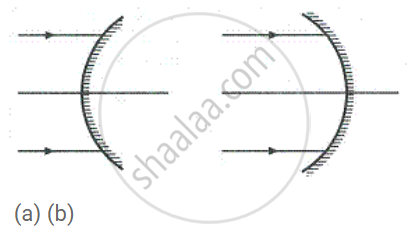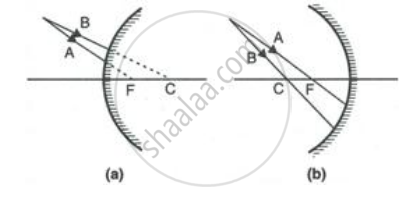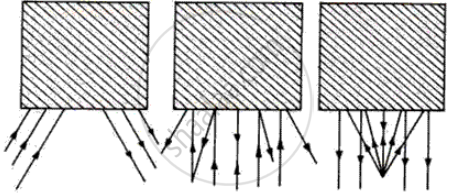Advertisements
Advertisements
प्रश्न
Define the Focal length of a spherical mirror
उत्तर
The distance between the pole and the focus is called focal length of the mirror. It is measured in meter or cm.
APPEARS IN
संबंधित प्रश्न
One half of a convex lens of focal length 10 cm is covered with a black paper. Can such a lens produce an image of a complete object placed at a distance of 30 cm from the lens? Draw a ray diagram to justify your answer. A 4 cm tall object is placed perpendicular to its principal axis of a convex lens of focal length 20 cm. The distance of the object from the lens is 15 cm. Find the nature, position and the size of the image.
Define the following term in the context of spherical mirrors:- Principal focus
An image formed by a ______ mirror is always of the same size as that of the object.
We can obtain a real, enlarged and inverted image by a concave mirror.
A virtual image larger than the object can be produced by a ______.
What type of image is formed:
on a cinema screen?
When a spherical mirror is held towards the sun and its sharp image is formed on a piece of a carbon paper for some time, a hole is burnt in the carbon paper.
What is the nature of spherical mirror?
Write the formula for a lens connecting image distance (v), object distance (u) and the focal length (f). How does the lens formula differ from the mirror formula?
The diverging lens in part (a) is replaced by a converging lens also of focal length 100 mm. The object remains in the same position and an image is formed by the converging lens. Compare two properties of this image with those of the image formed by the diverging lens in part (a).
Which are the two convenient rays that are chosen to construct the image by a spherical mirror for a given object? Explain with the help of suitable ray diagrams.
What is a spherical mirror?
Define the terms pole, principal axis and centre of curvature with reference to a spherical mirror.
Name the spherical mirror which (i) diverges (ii) converges the beam of light incident on it. Justify your answer by drawing a ray diagram in each case.
Define the terms focus and focal length of a concave mirror. Draw diagram to illustrate your answer.
In each case (a) and (b), draw reflected rays for the given incident rays and mark focus by the symbol F.

Complete the following diagrams shown in Fig. by drawing the reflected ray for each of the incident ray A and B.

Upto what maximum distance from the pole the image in a convex mirror can be obtained? what will be the location of object then ?
The radius of curvature of a convex mirror is 40 cm. Find its focal length.
A straight stick partly dipped in water obliquely, appears to be bent at the surface of water.
Draw a ray diagram in each of the following cases to show the formation of image, when the object is placed :
(i) between the optical centre and principal focus of a convex lens.
(ii) anywhere in front of a concave lens.
(iii) at 2F of a convex lens.
State the signs and values of magnifications in the above-mentioned cases (i) and (ii).
Define the following term in relation to concave mirror.
Radius of curvature
Define the term Aperture.
What is a mirror formula?
The boxes in figure (a, b, c) represent mirrors; insert a mirror which will reflect the incident ray as shown in the diagram.

Define the term Normal.
Define the term Principle focus.
A concave mirror can be used to produce a parallel beam of light. Draw a ray to illustrate this.
A shopkeeper wanted to fix a mirror that will give a maximum view of his shop. What type of mirror should he use? Give reason.
What is the difference between virtual images of an object formed by a concave mirror and a convex mirror?
For a spherical mirror, ______ is true.
The image formed in a plane mirror is always inverted.
Visit a nearby hospital. You can also visit the clinic of an ENT specialist, or a dentist. Request the doctor to show you the mirrors used for examining ear, nose, throat and teeth. Can you recognise the kind of mirror used in these instruments?
